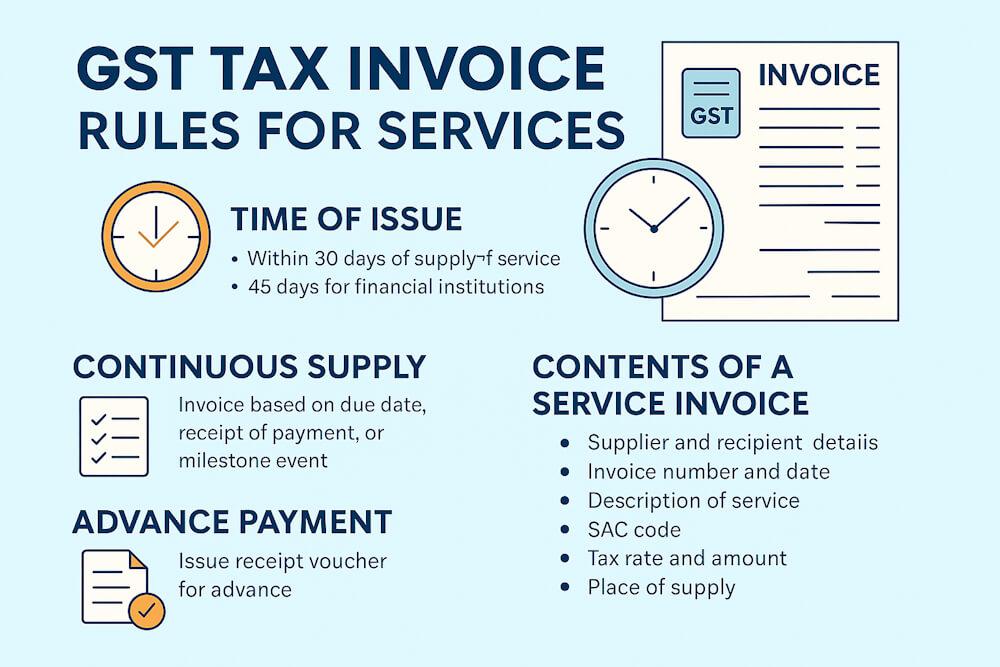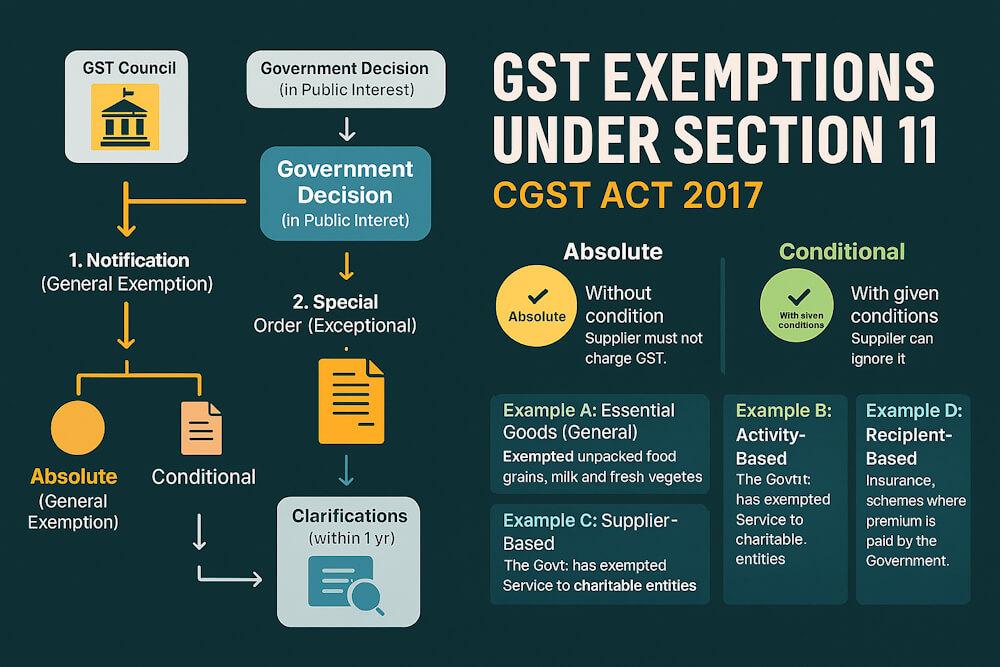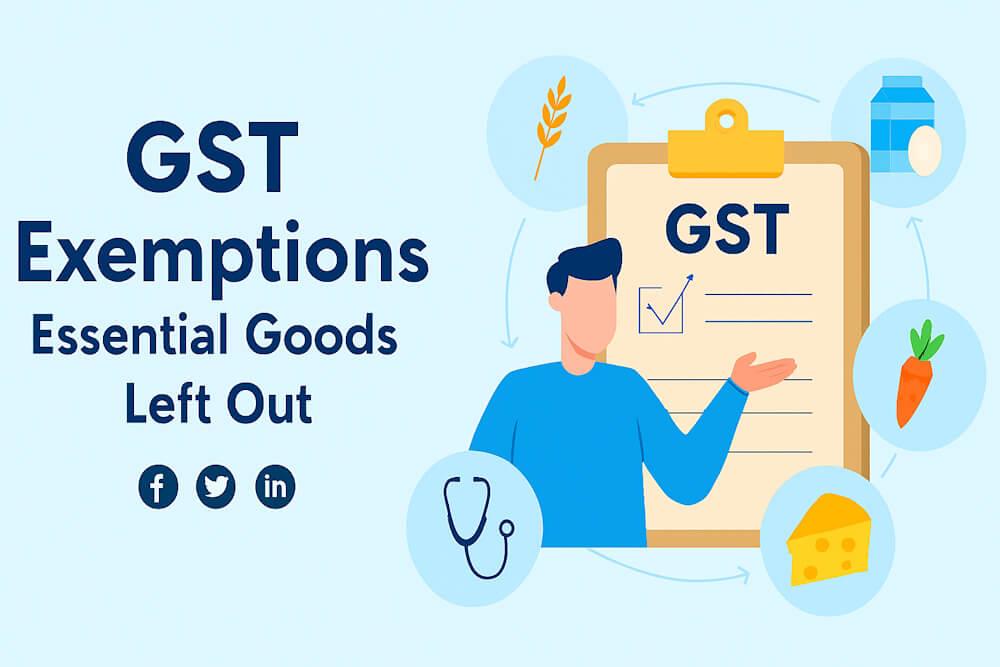I. Dual GST – Why India Has Two Layers
India runs on a federal system, meaning both the Centre and States share powers. So when GST was brought in, it couldn’t just be one tax collected by Delhi alone — States wanted their share too. That’s how the Dual GST Model came about.
Think of it like this: from production all the way to the final shop counter, GST applies at every step. But instead of just one authority collecting it, both Centre and State tax the same supply.
Earlier, States couldn’t tax services and the Centre couldn’t touch local sales. Now, under GST, both can. And yes, it runs across the entire country, including Jammu & Kashmir.
II. The Different Types of GST
People often get confused with so many abbreviations, so here’s the simple breakdown:
- CGST → goes to the Central Government.
- SGST → goes to the State Government (if it has its own legislature).
- UTGST → goes to Union Territories that don’t have a legislature.
- IGST → this is for when goods or services cross State borders. The Centre collects it first and later splits it.
👉 Rule of thumb:
- Same State = CGST + SGST/UTGST
- Different State = IGST
III. Legislative Setup
Now, here’s where it gets a bit technical. There isn’t just one law that covers everything.
- For the Centre → CGST Act, 2017.
- For Union Territories without legislatures (Andaman, Lakshadweep, Ladakh, etc.) → UTGST Act, 2017.
- For States and UTs with legislatures (like Delhi, Puducherry, J&K) → their own SGST Acts.
Even though every State technically has its own SGST law, the rules are kept almost identical — same definitions, same procedures, same logic. Otherwise, GST would lose the whole idea of being “one nation, one tax.”
IV. Centre vs. State GST – How It Works in Practice
Let’s say you buy a laptop in Delhi for ₹50,000. Under GST, that bill will have CGST + SGST. Suppose it’s 9% each, you pay ₹4,500 to the Centre and ₹4,500 to Delhi government.
If the same laptop was shipped from Delhi to Haryana, then IGST applies — say 18% straight. That 18% is collected by the Centre, but it later gives Haryana its share.
So, same tax base, but split differently depending on whether it’s within one State or across States.
V. Import and Export Rules under GST
Imports? They’re treated as inter-State supplies. So IGST kicks in, along with Customs duties (like Basic Customs Duty, Safeguard Duty, etc.).
Exports? Good news — they’re zero-rated. That means exporters don’t pay GST. They can even claim a refund for any input taxes they already paid. The logic is simple: keep Indian exports competitive abroad.
VI. GST Council – The Decision-Maker
This is like the “parliament” of GST. The Council has both the Union Finance Minister (as chair) and State Finance Ministers.
Its job? To recommend tax rates, exemptions, rules, and basically fine-tune the whole system. They meet regularly, argue a lot, and then take collective calls. It’s how the “dual model” is kept in sync.
VII. Input Tax Credit (ITC) – The Real Backbone of GST
If you ask most business folks what they actually like about GST, chances are they’ll mention ITC. Honestly, this is where GST feels like a big relief.
Before GST came in, there was this annoying problem of tax on tax. You paid excise duty, then VAT, then service tax, and half the time you didn’t even know what you were being taxed for. Basically, money kept leaking out at every stage.
Now with ITC, things are much cleaner. The system lets you adjust the GST you’ve already paid on your purchases (inputs) against the GST you need to hand over on your sales (output).
👉 Say you bought raw materials and paid ₹1,000 as GST. Later, you sold your finished product and collected ₹1,500 GST from your buyers. Under GST, you don’t have to pay the full ₹1,500 again. You just pay the difference, which is ₹500.
Feels fairer, right? That’s because you’re not paying tax on top of tax anymore. It actually makes the whole tax chain flow in a smoother, more logical way.
VIII. Place of Supply Rules – Why They Matter
Ever wondered why the government cares about “place of supply”? Because it decides who gets the tax — the State where the buyer is or the seller is.
- Within one State → CGST + SGST.
- Between States → IGST.
For services, it can get tricky. Sometimes it’s the location of the service provider, sometimes the customer. The rules are detailed, but the core idea is: make sure the right State gets its share.
IX. GST Registration – Who Needs It?
Another important piece is registration. You can’t just start collecting GST from people because you feel like it — you need to be registered.
Any business crossing a certain turnover limit has to register. Without it, you lose out on the benefits too, like claiming ITC.
But here’s the catch: even if you don’t hit the turnover threshold, there are some categories who must register no matter what. Think of inter-State suppliers, or e-commerce platforms. Basically, GST wants a wider net so fewer people slip through without paying their share.
X. Filing Returns – The Boring (but Necessary) Part
Now comes the not-so-fun side of GST: filing returns. Collecting the tax is only half the job. You’ve also got to keep the government in the loop by filing regular returns.
There are different types:
- GSTR-1 → for outward supplies (what you sold)
- GSTR-3B → a kind of summary return
- Annual returns → the big wrap-up at the end of the year
It might sound like a nightmare of forms, but most of it happens online these days. And the reason behind all this paperwork? Transparency. Every invoice you upload is matched with the other party’s invoice, so there’s less room for shady dealings.
XI. Compliance and Anti-Profiteering
One more thing GST tried to tackle is profiteering. The logic is simple: if the tax rate on a product goes down, the benefit should reach the consumer. Businesses shouldn’t just quietly keep the difference to fatten their margins.
To keep an eye on this, the government set up the National Anti-Profiteering Authority (NAA). For a while, they were pretty active. Recently, their role has been shrinking, but the principle still stands — GST isn’t meant to be a bonus for sellers, it’s meant to bring fairness to the market.
XII. Appeals and Dispute Settlement
Of course, no tax system runs without disputes. GST has its own hierarchy of appellate authorities and tribunals to settle cases.
If a business disagrees with a tax demand, it can go through this channel rather than dragging things straight to court. The goal is quicker, more specialized resolution.





